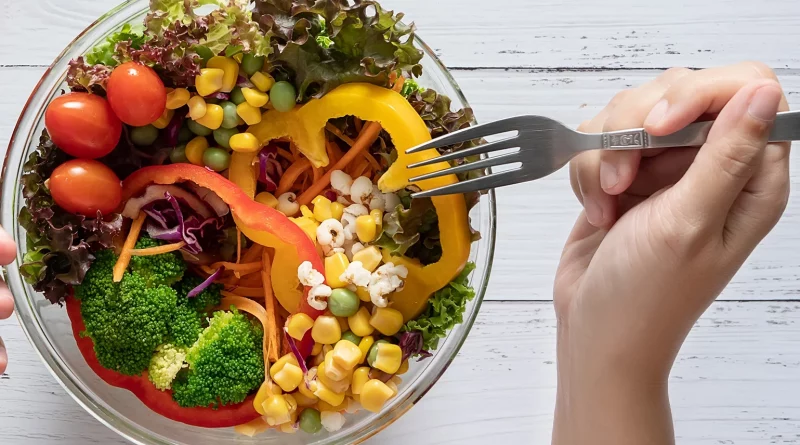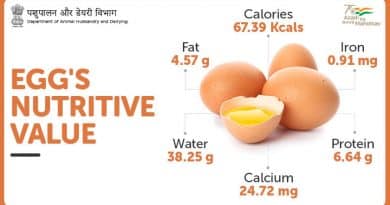Do You Know Your Proteins?
Proteins are one of the three major components or macro-nutrients of all foods. The other two are carbohydrates and fats.
Proteins have many functions including repairing your bones and muscles, building cells, and helping with your immune system. Proteins also serve as a source of fuel. They make up about 15% of your weight.
What is protein?
Proteins consist of chains of amino acids, which are simple organic compounds. These small molecules are contained in many of the foods you eat. During digestion, they are decomposed into single amino acids. These are then absorbed into your bloodstream and distributed around your body where they are used for various purposes.
There are at least 500 known amino acids. However, only 20 are used for making proteins. Different foods contain proteins made up of different amino acids.
In addition, your body itself synthesizes many amino acids from other compounds. However, there are nine amino acids that your body cannot create from its internal resources. These are known as the essential amino acids as they have to be obtained in the food you eat.
Of the remaining eleven amino acids, five are known as dispensable amino acids because there is no need to ingest them at all as they can be synthesized internally under all circumstances. However, six are classed as conditionally essential, ie their synthesis within the body might not take place when you have problems with your metabolism, the biochemical changes that occur in your body.
Some sources of protein, such as meat, deliver the full range of essential amino acids. These foods are said to be ‘complete’. ‘Incomplete’ proteins are low in one or more essential amino acids. Beans and tofu, for example, are incomplete sources of protein because they contain lower amounts of essential amino acids.
Sources of Protein
You get proteins from consuming both plant and animal products. On average, foods made from plants contribute over 60% of the total amount of protein consumed worldwide. But in northern Europe and North America foods derived from animals supply about 70% of the protein consumed.
Most meat, eggs, fish, and dairy products are sources of complete protein, proteins that contain all nine essential amino acids. So if you eat some meat then you can be fairly sure that you are getting all the amino acids you need.
Proteins are also supplied by whole grains and cereals and many of these contain relatively high concentrations (more than 7%) of protein. These include buckwheat, oats, rye, millet, corn (maize), rice, wheat, bulgar, sorghum, amaranth, and quinoa.
But the proteins supplied by whole grains and cereals are incomplete, ie they do not deliver all the essential amino acids. The missing amino acids can be obtained from other plants, such as legumes, pulses, nuts, and seeds. Many of these have higher concentrations of amino acids compared to whole grains and cereals and are more complete sources of protein.
Indeed whole soy, which comes from soybeans and which you’ll find in soy milk, tempeh, edamame, and tofu, gives you all the essential amino acids, just like protein from animal sources. It is used instead of meat in some vegetarian dishes.
Besides soybeans, examples of plant foods that contain more than 7% protein include lentils, kidney beans, white beans, mung beans, chickpeas, cowpeas, lima beans, pigeon peas, lupines, wing beans, almonds, Brazil nuts, cashews, pecans, walnuts, cotton seeds, pumpkin seeds, sesame seeds, and sunflower seeds.
Roots and tubers such as yams, cassava, and sweet potato, as well as plantains and fruits, are poor sources of protein and essential amino acids. Indeed, the protein content in these foods is between 0 and 2%, which is well below the 7% or better of many legumes, pulses, nuts, and seeds.
Because most of the protein you get from plant sources is incomplete, vegetarians and vegans need to eat a variety of plant proteins to make sure they get enough essential amino acids. The American Dietetic Association, however, maintains that a plant-based diet will provide adequate protein without having to eat any particular combination of foods.
Most nutritionists take a contrary view. Because certain plants contain particular amino acids but not others, they say, you need to combine several vegetables in a way that ensures that you get all nine essential amino acids. This is known as a ‘balanced’ meal.
Many nutritionists think that vegans need to ensure that they get all the essential amino acids over one day, rather than in one meal, ie they need to eat a ‘balanced daily diet’.
Getting a properly balanced meal or balanced daily diet together would probably require fairly advanced knowledge of nutrition. You would need a detailed knowledge of vegetables and the amino acids they contain. For me, a diet containing moderate amounts of ultra-lean meat is much simpler.
You can also get protein from protein powders which are manufactured sources of protein made from casein, whey, egg, rice, and soy. These protein powders are intended mainly as additional sources of protein for bodybuilders.
What does protein do in your body?
Proteins are the most common kinds of molecules in your body, after water. Your body needs them for growth and maintenance.
Protein is the major structural component of all cells in your body, the cells of your muscles, organs, hair, and skin. Proteins are also used in membranes and are needed in the formation of blood cells.
Broken down into amino acids, they are used in the building of muscle tissue and the repairing of damaged cells. They are also used in the manufacturing of hormones and other molecules essential for life.
Protein is only used as fuel when your carbohydrates and fats are running low.
How much protein do you need every day?
Most of us get plenty of protein in our diets and do not need to worry about deficiencies. But strict vegetarians, vegans, and older people can be at risk of insufficient protein. The warning signs include weight loss, tired muscles, and a drop in muscle strength.
Our bodies don’t store proteins the way they store carbs and fats, so you need a steady supply of protein every day. But how much you need depends on your gender, age and weight, and how active you are.
The amount of protein needed will also vary according to individual circumstances. Being very muscular increases the need for protein. Children need more protein for growth and development, while women need more during pregnancy or when breastfeeding. Anyone whose body is recovering from a trauma or after an operation needs more protein.
According to US & Canadian Dietary Reference Intake guidelines, to avoid a deficiency, women aged 19 to 70 should consume 46 grams of protein a day, while men in the same age range need 56 grams of protein a day. Of course, this figure is for a non-athlete.
The generally accepted daily protein dietary allowance, for a normal sedentary person, measured as the amount of protein ingested per kilogram of body weight, is 0.8 g/kg. This suggests that if you weigh 70kg, you should eat 56 grams of protein a day.
Protein can help repair muscles after working out. Many studies show that having high-protein foods or drinks soon after exercise helps build and restore muscle. But protein is only part of the story. The key nutrient to strengthen muscles is carbohydrates.
Nevertheless, several studies have concluded that active people and athletes may require more than 0.8 g/kg of protein a day due to increases in muscle mass and sweat loss. The additional protein is also needed for body repair and as an energy source.
Suggested amounts vary between 1.6 g/kg and 1.8 g/kg, while a proposed maximum daily protein intake would be approximately 25% of energy requirements, ie approximately 2 to 2.5 g/kg. The research however is ongoing and many issues remain to be settled.
What foods should you eat to get protein?
As a person with type 2 diabetes, your concern extends well beyond the issue of how much protein you get in your diet.
If you are following the diet I am using to successfully beat or reverse my diabetes, you are eating natural, unprocessed foods that are low in sugar, fat, and salt, high in fiber, and digested slowly. You are excluding eggs and all dairy products from your diet. In addition, you are drinking copious amounts of water to help absorb all the fiber you are ingesting with this plant-focused diet.
On this diet, your protein intake will most certainly not be deficient.
Animal protein in the form of meat and fish will always deliver complete protein. However, animal protein can damage your kidneys. In addition, it usually arrives on your plate bundled with loads of fat which will destroy your efforts to beat your diabetes unless it is minimized.
The trick is to limit your animal protein to very lean meat such as top round steak, pork cuts from which you can cut away fat, skinless white (breast) meat of chicken, and fish from which you have stripped away the skin. This will give you plenty of complete protein and only moderate amounts of fat.
You can also get complete protein from soy products such as soy milk, tofu, tempeh, and edamame. You can find soy dishes in health-food stores and (sometimes) in the health-food section of your local supermarket.
Many beans contain plenty of protein, often over 7%, though it is incomplete. However, when you combine beans with a variety of vegetables you can be sure that you are getting all the essential amino acids.
The protein you consume mustn’t be accompanied by fat, especially saturated fat. To ensure that you don’t miss out on fiber and other important nutrients, you have to include grains and vegetables in your diet. These too will deliver plenty of protein, albeit incomplete. But if you combine several vegetables on your plate you can be sure that you are getting most of the essential amino acids.
You also need to include roots, tubers, and fruits in your diet even though these do not deliver a lot of protein. They do however deliver lots of other nutrients needed by a type 2 diabetic.



